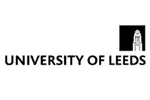We're moving! This site will be relocating to goingto.university in 2026. Please update your bookmarks to the new address.


| The award | How you will study | Study duration | Course start | Domestic course fees | International course fees |
|---|---|---|---|---|---|
| BSc | Full-time | 1 year | September | GBP 9250 total | - |
A sound knowledge and understanding of human anatomy is required in almost all medical specialities, not simply in the obvious disciplines like surgery, pathology and radiology. The BSc Clinical Anatomy provides the opportunity for extensive hands-on study of anatomy in the dissecting room supported by lectures, tutorials and seminars in areas including gross anatomy, neuroanatomy, medical imaging and medical embryology.
The anatomy team is small and friendly. We work very closely with the intercalating anatomy students and get to know them very well.
Students on this degree programme have gone on to give oral or poster presentations at national meetings; some have won awards for these presentations.
Course content
Each student will carry out extensive detailed dissections, initially in small groups of 2-3 and then individually. The Anatomy staff will always be on-hand to guide you, and you shouldn't be concerned if you haven't done any dissection before - the course is designed to provide you with the necessary skills. This core practical experience is supplemented by lectures, tutorials, seminars and other forms of learning, covering not just gross anatomy but also medical embryology, neuroanatomy and medical imaging. The modules offered build substantially on the anatomical learning you will have done earlier in your medical programme. In all cases, the anatomy is put into a clinical context.
The practical element of the programme is carefully constructed to facilitate the transition from the group working you may have experienced in the dissection room as a medical undergraduate to individual study and the preparation of exhibition-quality specimens as part of the Clinical Anatomy Project module. The latter allows you to study in detail aspects of anatomy relevant to a clinical condition or surgical procedure; for example, you might compare the structures at risk during different surgical approaches used in the treatment of a particular condition or investigate the anatomical reasons why a particular mode of treatment may fail in a proportion of patients even though they all have substantially similar disease. Recent project titles include:
Course structure
These are typical modules/components studied and may change from time to time. Read more in our Terms and conditions.
Year 1
Compulsory modules
Entry requirements, fees and applying
Entry requirements
Successful completion of the first two years of an MBChB programme (or equivalent) at a UK University or International equivalent. For International students, proof of English language proficiency will be required. In line with undergraduate medicine, we require a minimum of English GCSE grade B or IELTS 7.5
International Foundation Year Programme
International students who do not meet the academic requirements for undergraduate study may be able to study the University of Leeds International Foundation Year. This gives you the opportunity to study on campus, be taught by University of Leeds academics and progress onto a wide range of Leeds undergraduate courses. Find out more about International Foundation Year programmes.
How to apply
Read about applying for intercalation on the School of Medicine website.
Potential applicants from other universities must contact the Programme Administrator Miss Sarah McLaren ([email protected]), for further information about the programme and the application process.
Fees
UK/EU: To be confirmed
International: To be confirmed
For UK and non-UK EU full-time students starting in 2018, the fee for 2018/19 will be £9,250.
The fee for undergraduate students starting in 2019 will be confirmed in September 2018.
The fee may increase in future years of your course in line with inflation, and as permitted by law. For example, the increase of 2.8% in 2017/18 was based on the government's forecast for the RPI-X measure of inflation.
The UK government has confirmed that non-UK EU students in 2018-19 will have home fee status and be eligible for UK government student loans. The UK government has not confirmed the situation for future years, so keep checking our website for updates.
Additional cost information
There may be additional costs related to your course or programme of study, or related to being a student at the University of Leeds. Read more about additional costs
Financial support
Read about possible financial support for intercalation on the School of Medicine website.
Read about intercalating prizes on the School of Medicine website.
Career opportunities
Most medical students are appointed to NHS foundation school posts, following graduation with MBChB. At the moment, possession of an intercalated degree places medical students at a competitive advantage in the foundation post application process.
The Clinical Anatomy programme may be particularly beneficial for students interested in pursuing careers in surgery, radiology, anesthesiology, pathology and related subjects.
Past students
Students on this degree programme have gone on to give oral or poster presentations at national meetings; some have won awards for these presentations. Recent examples, with student names shown in italic text, include:
Kumar, S.D & Bourke, G. Nerve compression syndromes at the elbow. Orthopaedics and Trauma 30(4): 355-362, 2016
Jones, L. The limitations of the use of the sternocleidomastoid muscle as a reconstructive flap. Christie International Student Cancer Conference, Manchester 2016.
Rogers, G, Clancy, J, Taylor, M & Harwood, P. The safety of distal tibia Illizarov wire insertion in relation to the superficial peroneal nerve and deep peroneal neurovascular bundle: a cadaveric study. British Orthopaedic Association, Belfast 2016.
Moriarty, S & Clancy, J. Branches of the cervical vagus nerve and implications for vagus nerve stimulation. International League Against Epilepsy Annual Scientific Meeting, Dublin, 2016.
Blackham, M. Surgical approaches to the cervical spine. Cutting Edge Women in Surgery Conference Leeds, 2016.
Chandra M, Start S, Roberts D and Bodenham A. Arterial vessels behind the right internal jugular vein with relevance to central venous catheterisation. Journal of the Intensive Care Society 16(3) 202-207, 2015
Kelly, C, Loughenbury, P, Harwood, PJ, Clancy, J & Britten, SS . Safe corridors for insertion of calcaneal wires in Ilizarov surgery: An anatomic study. Oral presentation at the 16th EFORT Congress, Prague 2015.
Scarff , G & Pickering JD. Blood supply to the splenic flexure and prevalence of the collateral vessel Arc of Riolan in relation to ischaemic colitis. Oral presentation to the British Association of Clinical Anatomists 2015.
Wood, B, Kelly, G, Phillips, N & Pickering JD. Approaches to the cerebellopontine angle: What is the most effective form of management for a patient presenting with a small acoustic neuroma and serviceable hearing. Oral presentation to the British Association of Clinical Anatomists 2015.
Jackson, P & Roberts, DJH. Assessment of anatomical landmarks as reliable predictors of the course of the Spinal Accessory Nerve in the posterior cervical triangle. Poster presentation to the British Association of Clinical Anatomists 2014.
Smith A & Pickering JD. Assessing the usefulness of Simon's and Joll's triangles in thyroidectomy. Oral presentation to the British Association of Clinical Anatomists 2014.
Contact University of Leeds to find course entry requirements.
Below are some suggested courses at other providers that you may also be interested in:
Art and Design - Advanced Master Masters by Research
KdG University of Applied Sciences and Arts
Find out moreConsider a Foundation or Pathway course at University of Leeds to prepare for your chosen course:
If you do not meet the entry requirements for this course then consider one of these courses from another institution:
There are 868 other courses listed from University of Leeds. A selection of these are displayed below:
Join the StudyLink email list and never miss a chance to turn your study abroad dreams into reality!

See other universities in Leeds
Find out more about studying in the United Kingdom